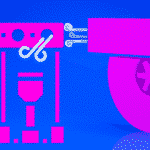8 Signs That Indicate Your Ship’s Auxiliary Engine Needs Overhauling
Ship’s auxiliary engines are the most important supporting pillars that keep the ship going. As a marine engineer working on ships, understanding the ship’s auxiliary engines is of prime importance in order to avoid sudden breakdowns or blackout situation.
However, ship’s auxiliary engines are not easy to tame. They need constant monitoring and maintenance for running at all the times and for preventing them from bringing the ship to a stand still.
Though routine maintenance and checks of auxiliary engines is a must, there are times when they requires serious overhauling. As marine engineers, it is important to know the time and signs which tells that the auxiliary engine needs overhauling.
Mention below are eight signs to check in your auxiliary engine.
1. Generator Not Taking Rated Load
If the generator is not taking the rated load then there are chances that it is having some serious trouble. Signs like overall temperature of the engine going off-limit, important parameters showing abnormal figures and unusual fluctuations etc. indicates that the generator needs some serious checking.
2. Power Imbalance
A ship’s engineer must keep a close eye on all the parameters, especially while taking performance readings of the auxiliary engine. If there is high peak pressure variation in any of the generator units as compared to the average pressure, it indicates that the combustion chamber needs immediate overhauling.
3. Degradation of Lube Oil
Examining the quality of the lube oil is yet another way to find out about the condition of the ship’s auxiliary engine. If it is found that the lube oil is degrading and needs to be removed before its running hours limit due to sludge formation, it may indicate blow past of the units. Such condition would require finding out the faulty unit followed by major overhauling.
Degradation of lube oil would also lead to choking of filters, major reduction of oil pressure, and sudden increase in differential pressure. It is important to keep a track of these signs as well.
4. White Metal Particles Found in Filters
If any type of metal particles (small or large) are found in the filters, it indicates that major wear-down of bearings is taking place. This would require immediate overhauling of the faulty unit.
5. Unusual Knocking Sound
Sound of the auxiliary engine is also one of the best ways to identify a problem. As a marine engineer working on ships, you would be quite familiar with the usual working sound of the auxiliary engine. If the “working sound” is replaced by any unusual knocking sound, it indicates that there is some problem with your machinery system.
Observe the knocking sound closely, if the sound is increasing at a faster rate, it is better to rectify the faulty engine as soon as possible.
6. Generator Over-Speeding
Over-speeding of generator is a situation wherein uncontrolled acceleration of the engine takes place, leading to mechanical failure and serious accidents. Mostly, it occurs during the time of starting, but can also occur when it is running on load due to fuel pump getting stuck or problem in the fuel system. Check if your engine is over-speeding and take measures accordingly.
7. Abnormal Crankshaft Deflection Readings
A marine engineer has to take timely measurement of crankshaft i.e. crankshaft deflection with the help of dial gauge. If the readings are above the normal limit, it indicates problem in the main bearings or alignment of crankshaft, requiring immediate action.
8. Running Hours
Last but not the least, keeping a track of the running hours is extremely important to know when the engine would require next overhauling. Read the past records and carry out timely overhauling procedures.
These are some of the important points to figure out if your auxiliary engine requires complete overhauling. Do you any other ways to find out problem with auxiliary engines? Let us know in the comments below.
D’carb or major overhauling of a ship’s generator is a very tedious task for marine engineers on board. Following a step-by-step procedure backed by systematic planning is the base of a successful generator overhauling procedure.
Do you have info to share with us ? Suggest a correction
Latest Marine Technology Articles You Would Like:
- 10 Harmful Effects Of Impure Air On Ship’s Machinery
- 10 Important Things to Check While Starting Fuel Oil Purifier on Ships
- 10 Noteworthy LNG-Powered Vessels
- 10 Points for Efficient Turbocharger Operation On Ships
- 10 Practical Tips to Handle Engine Room Pumps
- 10 Precautions to Take Before Operating Controllable Pitch Propeller (CPP) on Ships
Subscribe To Our Newsletters
By subscribing, you agree to our Privacy Policy and may receive occasional deal communications; you can unsubscribe anytime.
Web Stories

About Author
An ardent sailor and a techie, Anish Wankhede has voyaged on a number of ships as a marine engineer officer. He loves multitasking, networking, and troubleshooting. He is the one behind the unique creativity and aesthetics at Marine Insight.























I also think that variations in exhaust gas temperatures in each of the cylinders that exceed 50 degrees Celsius may prompt engineers to arrange for an overhaul. Also, when scavenge air temperatures are higher than usual.
In my case when I was a cadet, the generators on the merchant vessel I was on had this issue. We carried out an overhaul of each of the six cylinder heads. Afterwards we noted that the exhaust gas temperatures of all the cylinders were within a maximum of 20 degrees of each other.
An auxiliary Engine is fluctuating on the same/constant load. Condition true or false. Explain with reasons.